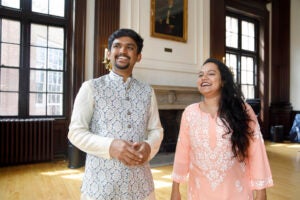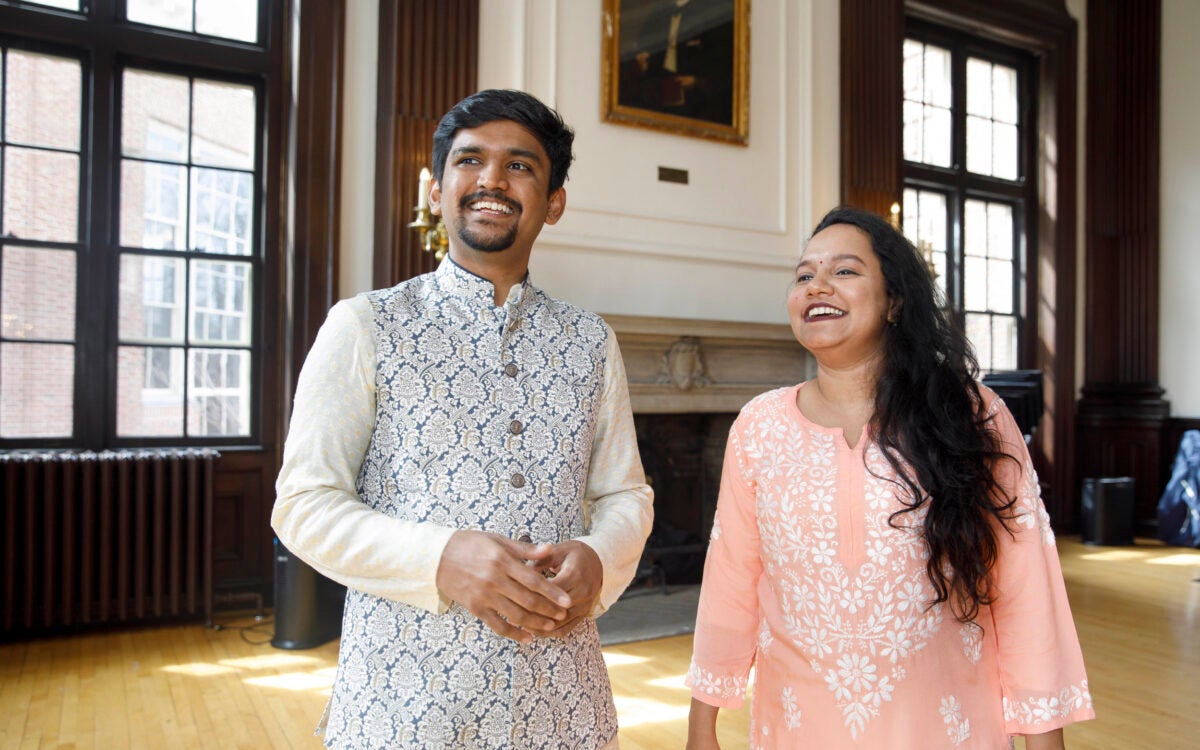‘I’m ready for my close-up, Professor Kuriyama …’
How do you attract students to a course? With more than 5,400 classes on offer each year, it can be a difficult proposition. Shigehisa Kuriyama, Reischauer Institute Professor of Cultural History in the Department of East Asian Languages and Civilizations, borrows a Hollywood technique: offer a movie trailer.
The Web site for Kuriyama’s course, “Medicine and the Body in East Asia and Europe,” features a three-minute movie that highlights some of the themes addressed over the course of the semester. Images from the 14th century, Asian music, and detailed commentary provide entertainment as well as education. Kuriyama created the trailer by using iMovie, a production tool from Apple that allows users to make short films from photographs, videos, music, and voice recordings.
Kuriyama’s course trailer serves a greater purpose than just getting students in the door. It also offers a preview of the kind of work that those enrolled will be expected to do as the semester unfolds. As part of a final project, each student produces an iMovie on a subject of his or her choosing.
“Creating films helps to make the material more engaging for both students and scholars,” says Kuriyama. “You communicate simultaneously through a variety of senses.”
Early in the semester, Kuriyama offers workshops on the iMovie software so that students can become proficient. Then, it’s off to the library for research and to the computer lab for production and editing.
“The composition process is technically simple,” says Kuriyama, “but it is challenging to find the appropriate text, images, and music.”
Kuriyama estimates that composing a three- to four-minute iMovie requires about the same amount of work as writing an eight-page term paper. However, he notes that for most students the thought process is markedly different.
“Students think much more about the presentation and reception of their research,” he says. “Because the end result is so visual and auditory, it’s easier to notice the imperfections.”
According to Kuriyama, the movies also help to improve students’ writing.
“Students have to condense their thoughts into three to five minutes,” he said, “so it is important that they choose their words wisely.”
Kuang-Chi Hung, a graduate student in the department of the History of Science taking Kuriyama’s course, noted that the brevity of the films made the project particularly challenging.
“It was difficult to find a way to tell my story in less than five minutes,” said Hung. “In that respect, I think the project provides excellent training for scholars and students because you must express yourself concisely.”
The films may be short, but they cover a diverse range of topics. This fall, for example, Diane Siegel ’09 explored the concept of brain death in Japan and the United States, a controversial subject with important ramifications for organ donation. Ashley Brenner, a master’s candidate in East Asian Regional Studies, offered an investigative look at Asian massage parlors, which sometimes serve as a cover-up for prostitution rings. Kareem Shuman ’09 presented a film on the history of the eugenics movement in America from 1896 to 1945. His focus on “better baby” competitions offered a dark look at the American obsession with producing healthy offspring.
Hung produced a film about the reception of Darwinism in Japan during the early years of the 20th century. His work, “Two Phases of Darwinism in Japan,” explored how Darwinism raised anxiety in the culture.
“iMovie is useful for reproducing a specific historical situation,” said Hung. “By using images, text, and sound you make it easier for the audience to be in touch with a moment or a mindset in the past.”
Although Hung has completed his final project for Kuriyama, he will continue using iMovie.
“I plan to incorporate iMovies into my lectures next fall,” he said, “to make them more interesting and inspiring.”




